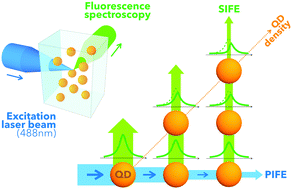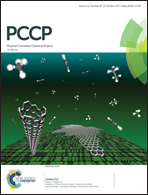A global method for handling fluorescence spectra at high concentration derived from the competition between emission and absorption of colloidal CdTe quantum dots†
Abstract
We investigate the effects of the concentration of CdTe quantum dots (QDs) on their fluorescence in water. The emission spectra, acquired in right angle geometry, exhibit highly variable shapes. The measurements evidence a critical value of the concentration beyond which the intensity and the spectral bandwidth decrease and the fluorescence maximum is redshifted. To account for these observations, we develop a model based on the primary and secondary inner filter effects. The accuracy of the model ensures that the concentration dependent behaviour of QD fluorescence is completely due to inner filter effects. This result is all the more interesting because it precludes the assumption of dynamic quenching. As a matter of fact, the decrease of the emission intensity is not a consequence of collisional quenching but an effect of competition between fluorescence and absorption. We even show that this phenomenon is linked not only to the QD concentration but also to the geometric configuration of the setup. Hence, our analytical model can be easily adapted to every fluorescence spectroscopy configuration to quantitatively predict or correct inner filter effects in the case of QDs or any fluorophore, and thus improve the handling of fluorescence spectroscopy for highly concentrated solutions.

- This article is part of the themed collection: 2017 PCCP HOT Articles


 Please wait while we load your content...
Please wait while we load your content...